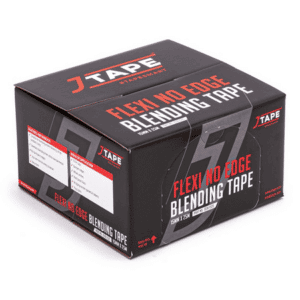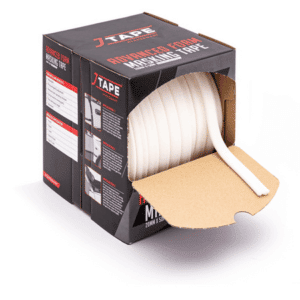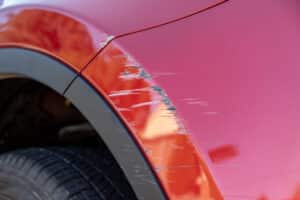Masking Spot Repairs with Blending Tape
There’s huge demand for smart repairs right now. And it’s easy to see why – they’re a great way to save money and lower your business costs while being able to offer more for your customers.
Since the most expensive part of painting a car is the paint itself, this method allows the repair shop to use less paint by only tackling the problem area rather than removing the panel and starting from scratch. Not to mention it can save time for you and allow you to move on to the next job quickly, and the customer who just wants their issue to be fixed.
For such a high-demand skill, it’s worth spending some time mastering the techniques to get this right. By providing exceptional smart repair services, you can establish your shop as the preferred destination for a wider customer base. Here, we’ll give you our best tape recommendations and explain some of the greatest techniques for nailing all types of spot repairs on every type of vehicle.
Best Tapes and Masks for Spot Repairs
So which tapes and masks are best for spot repairs and smart repairs? Here are our two top product recommendations:
Flexi No Edge Blending Tape

Our JTAPE Flexi No Edge Blending Tape can easily fit around any curve, saving considerable time and materials to give a perfect finish every time. Not only is it temperature resistant up to 90C/194F, but it’s also easy to apply and remove using the tape’s flexibility. This makes it excellent for use on spot repairs anywhere on the car’s bodywork, from the bumper to the door panels.
Getting muddled up between our Flexi No Edge Blending Tape and No Edge Blending Tape? Read our guide taking you through all the main differences here.
Advanced Foam Masking Tape

Carrying out smart repairs across jambs? Our Advanced Foam Masking Tape is an innovative foam-based tape perfect for creating a blended edge. The highly adjustable tape features an offset adhesive, allowing you to ensure you’re getting the perfect finish after each stage of the painting process. It also benefits from temperature resistance up to 90°C/194°F, meaning that this tape is suitable for use in low bake ovens.
How to Mask for a Body Spot Repair
Using the Flexi No Edge Blending Tape and Advanced Foam Masking Tape together to mask off a section of bodywork for spot repairs is simple and easy. This is because our tape solutions are designed to provide a seamless finish from old paintwork to new.
Below, we’ll take you through all the main steps to follow.
Prepare the area for spot repairs
The first step is to begin preparing the surface for the specific repair you’ll be carrying out. Whether you’re smoothing out a dent or fixing some small scratches, you’ll usually need to sand the area. Interested in learning how to wet sand for spot repairs? Check out our guide full of the best tips and advice.
This will need to wear down all the paint layers that have been damaged. For dents or deeper scratches, you might also need to fill and sand the area to improve the evenness of the surface and ensure it all appears uniform. This process can be done over the damaged area only during a smart repair, which saves on time and materials.
Use the tape to mask the damaged area
Taking your Advanced Foam Masking Tape, the first thing you’ll want to do is fill in the jambs because once this has been done, you can’t open the doors again. Then take our Flexi No Edge Blending Tape and line it up around the edges of the area to mask it off. For example, when dealing with scratches on the front wing of the bumper, you would apply Advanced Foam Masking Tape to fill the jambs before using Flexi No Edge Blending Tape to protect the surrounding paintwork and bodywork. For an effective spot repair job, it’s best to mask off the smallest area possible.
Our solutions can easily be applied to a wide variety of surfaces on the car’s exterior, including swage lines and the panels on the front and back bumpers. We would recommend using the Flexi tape for this use, while jambs should be handled using our Advanced Foam Masking Tape because this is easier to use in more difficult-to-reach spaces.

Apply the automotive paint
The primer should be applied to the entire area, being sure to focus first on the damage. You can then spray a few layers of the base coat and a clear coat across the entire masked-off area.
Once you’re happy that this is completed to a high standard, the tape can be removed while the paint is still tacky since this will ensure that there are no hard paint lines. Instead, you should be left with a perfectly blended finish from the old to the new paintwork. The removal process couldn’t be easier – simply pull on the tape slightly to disrupt the adhesive and you can pull it away from the surface.
At JTAPE, we believe it’s incredibly important to use purpose-built tape for spot repairs. From cutting down your paint usage to saving time, we’re dedicated to helping you get the job done properly and to an excellent standard. For more excellent tape solutions dedicated to assisting automotive professionals in their everyday work, check out our range of blending tapes.


